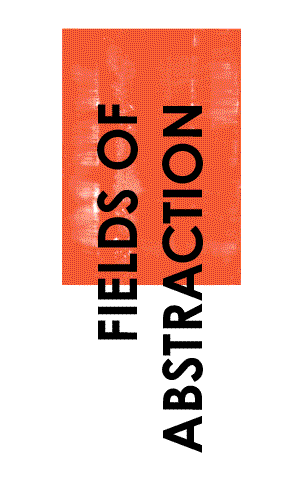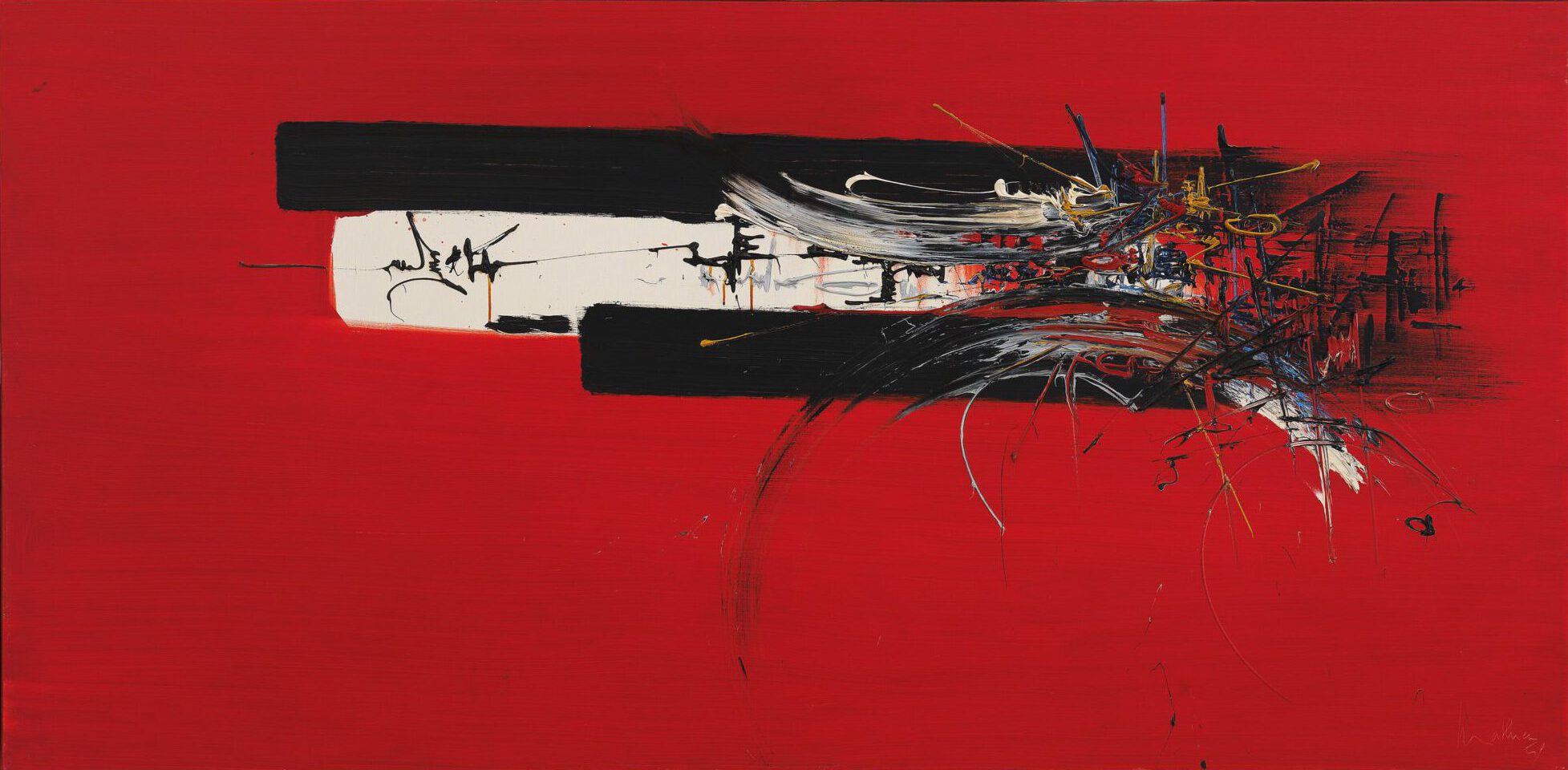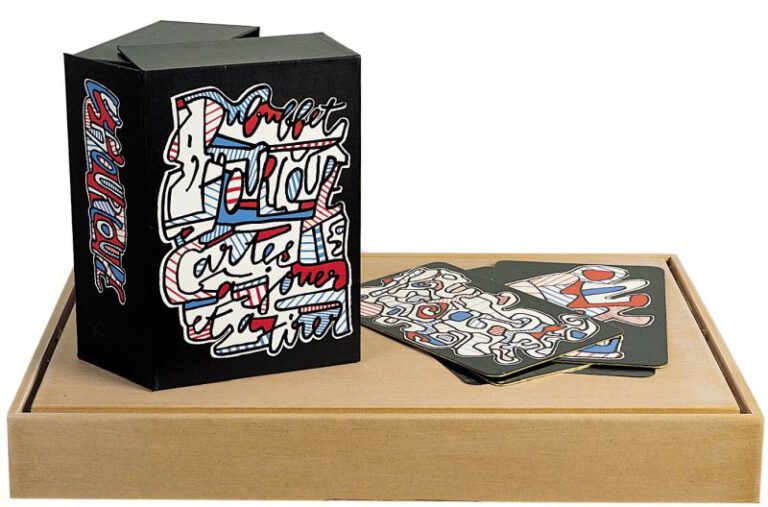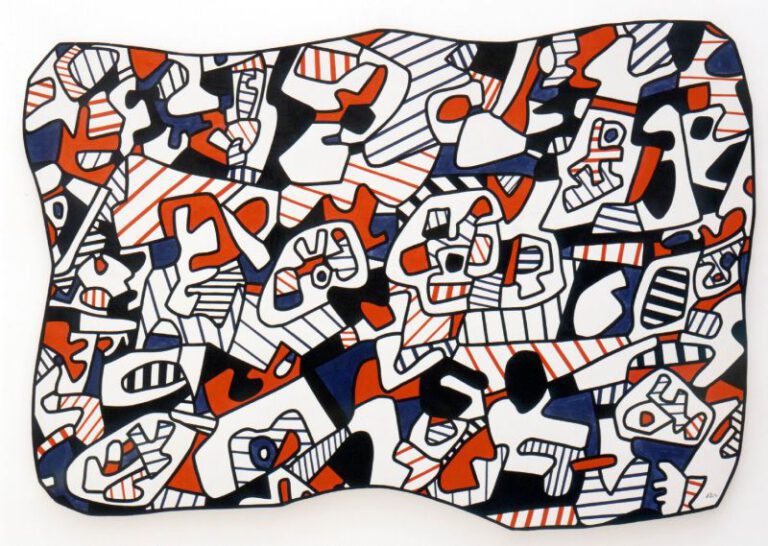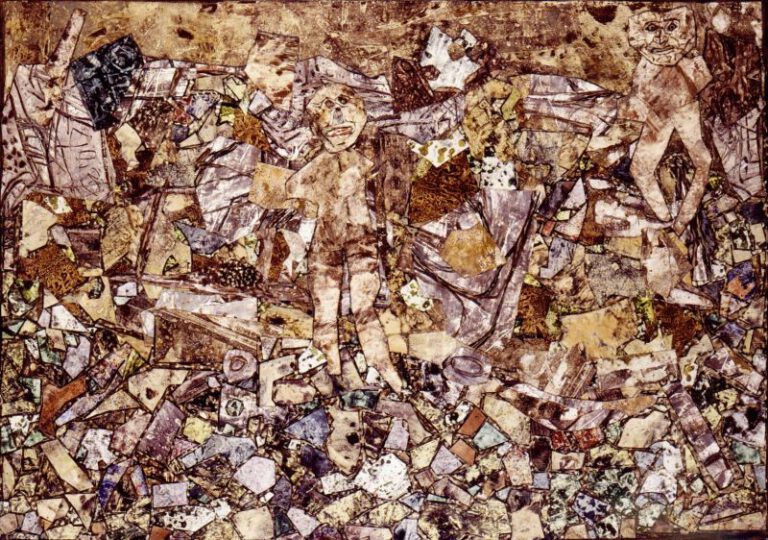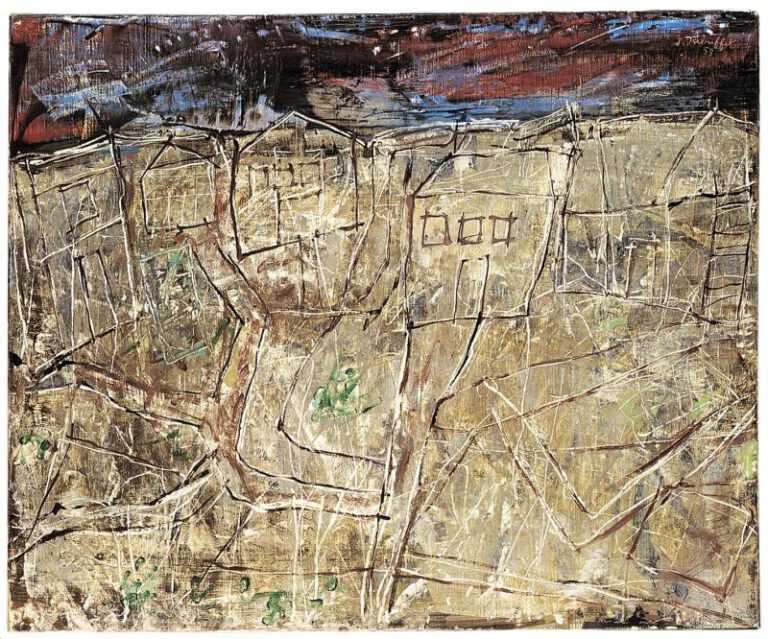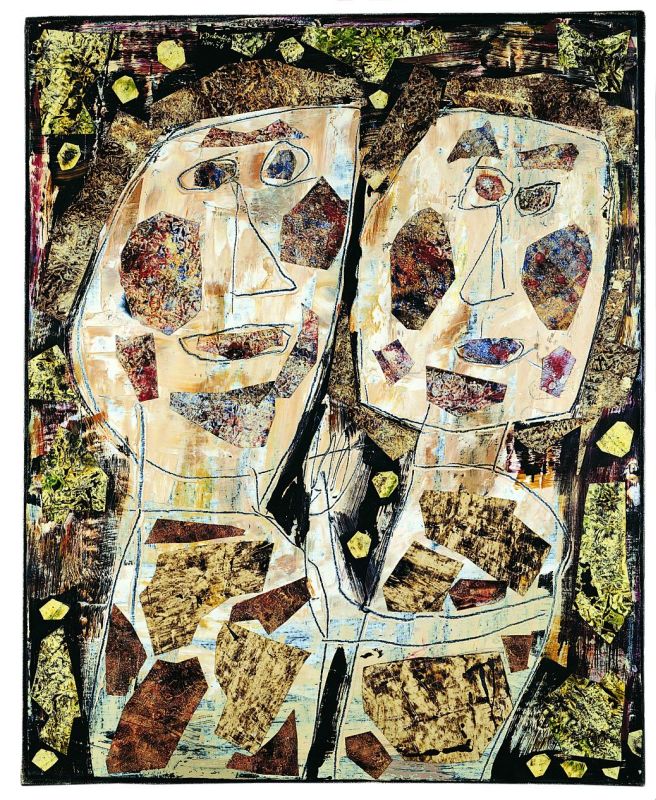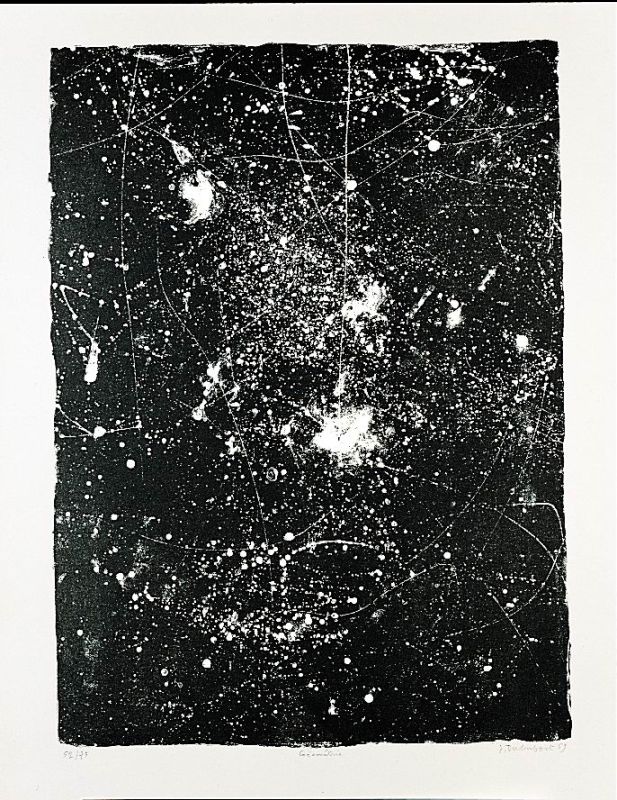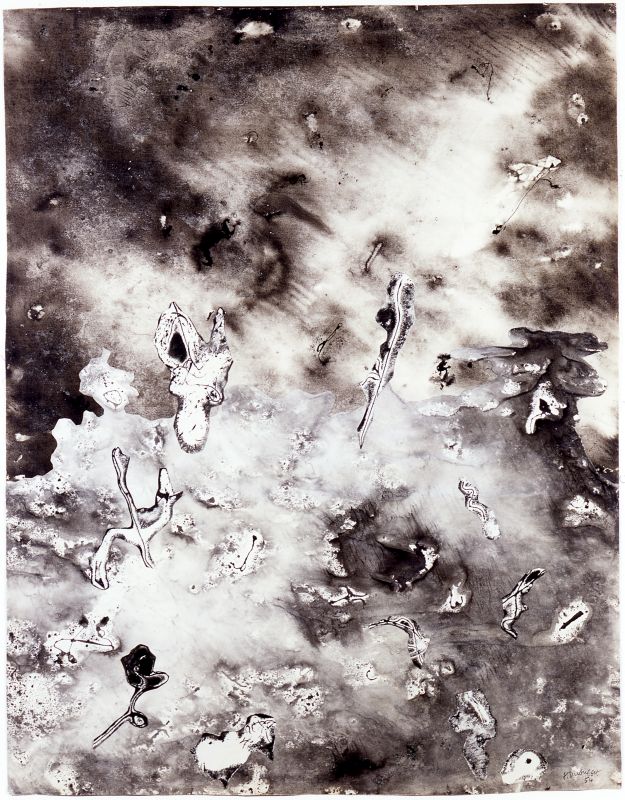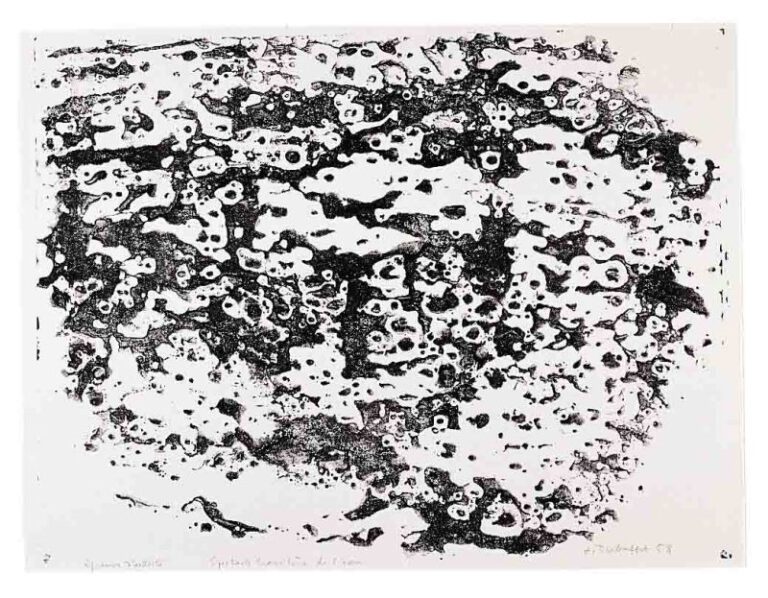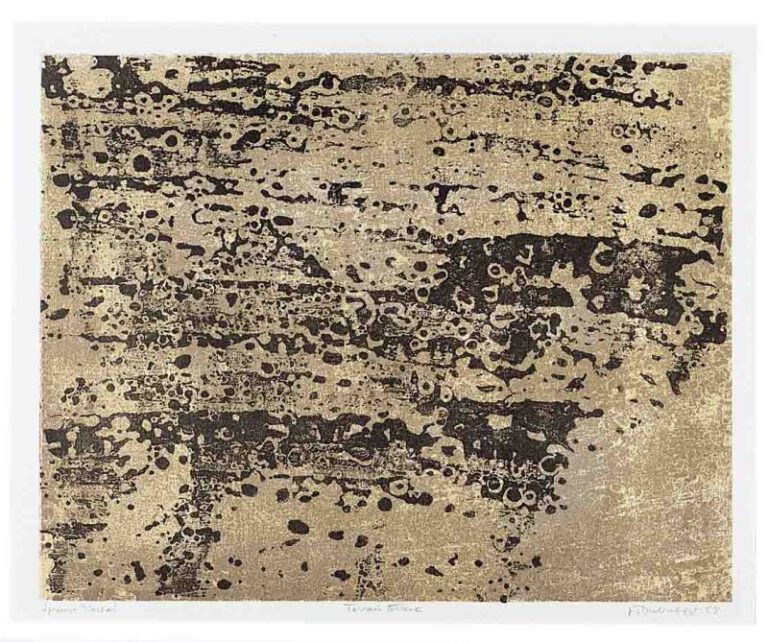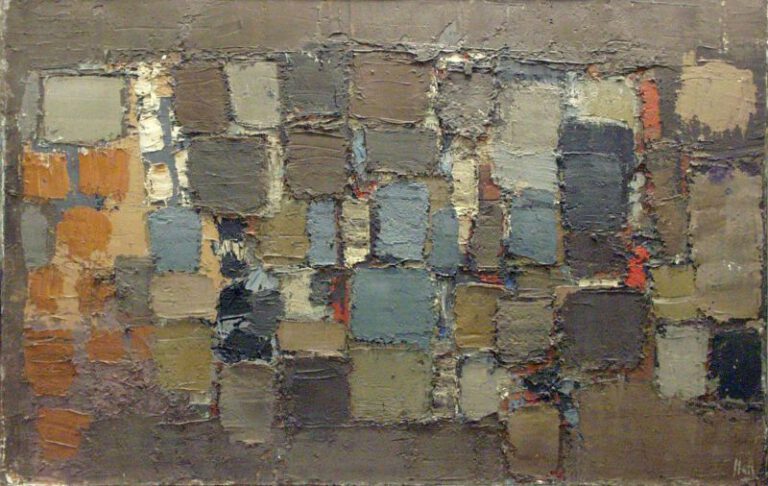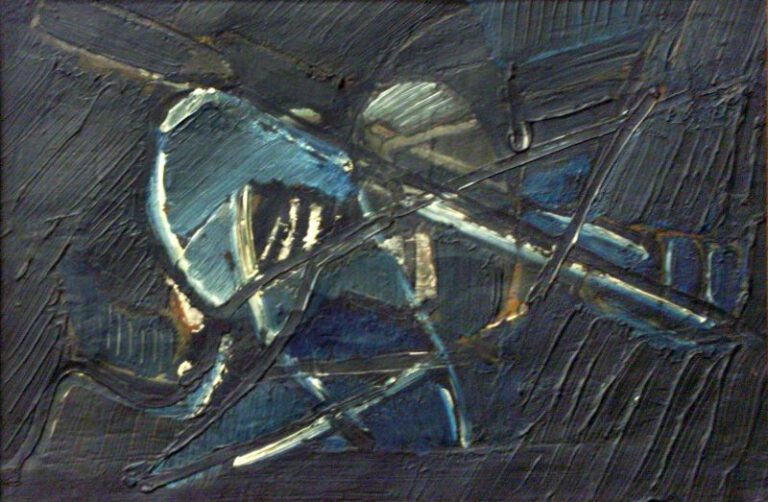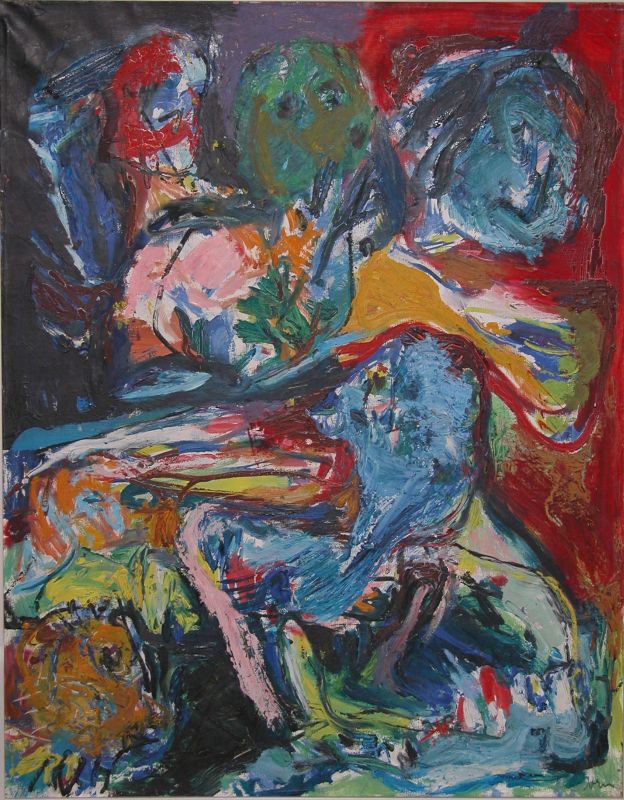This work was executed two years after Mathieu’s trip to Japan in 1957, where he was introduced to the Gutai group – young radical artists who explored experimental performance, the immediacy of painting, and interactive environments, emphasizing the relationship between body and matter. The Japanese influence is manifest in his work in the predominance of red, one of the national colors, and in a kinship between his artistic language and Far Eastern calligraphy. The title of the painting reveals Mathieu’s passionate interest in the history of the Middle Ages – particularly the conquests of Lothair, the Carolingian King of West Francia.
The upper center of the painting exhibits an abstract motif composed of three horizontal bands (a white strip flanked by two black bands), on which Mathieu created an explosion of colors. He painted directly from the tube, and then partly squashed the paint, leaving smears, splashes, and drips. The texture is palpable and conveys a kind of struggle or dance between the artist and his canvas. Like a knight drawing his sword, Mathieu moves forward and backwards, lunging towards the painting, pushing gesture to its limits: “My painting is the painting of energy, fever, excitement, of life.”
Mathieu – who is widely considered the founding father of the French 1960s Lyrical Abstraction movement – identified the fundamental principles of his work: rapid execution (to avoid the interference of consciousness), no preexisting forms or references, spontaneous movement, entering an ecstatic, trance-like state of concentration. A bridge between France and the American Abstract Expressionists, he became known for his public timed performances and happenings, precursors of graffiti and street art.
Sarah Benshushan
